Some racing drivers have found immediate success in their sports’ biggest races, while others have waited a lifetime to taste victory.
There’s Daytona 500 rookie sensation Trevor Bayne, contrasting with Dale Earnhardt and his 20 years of trying.
The pack of four-time Indy 500 winners – Foyt, Unser, Mears, and Castroneves – have enjoyed a wealth of riches in the Greatest Spectacle in Racing, while the Andretti family is a collective 1-for-78 behind the wheel.
And Formula 1 world champions such as Nigel Mansell, Jim Clark, and Nelson Piquet never celebrated on the top step of the podium in Monaco, even as underdogs Jean-Pierre Beltoise, Olivier Panis, and Jarno Trulli earned their only career wins in the marquee event.
I have experienced a bit of each in my sim racing career. I won the Indy 500 and 24 Hours of the Nürburgring in my first attempts, and earned victories in the early years of the 24 Hours of Daytona and 12 Hours of Sebring.
But one endurance race has proven much more elusive than the rest, not just to find victory, but any semblance of success. And it’s at my favorite track in the world.
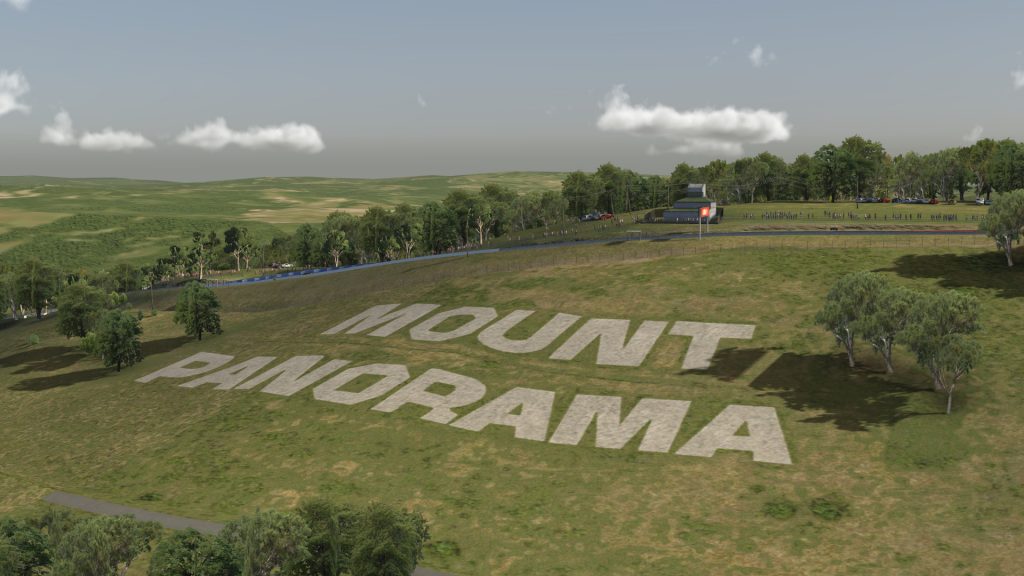
Our Bathurst Background
The Bathurst 12 Hours is contested over the undulating straightaways and menacingly quick roads carved into Australia’s Mount Panorama. It’s a brilliant circuit, and one on which I’ve done well in other events, getting my road iRating above 5,000 in official races and taking an unexpected podium in the Bathurst 1000 with my longtime teammate, Karl Modig.
However, our past efforts in the 12-hour race have been a struggle.
Our first try in 2019 ended on the first lap when I clipped the wall at Forrest’s Elbow and badly damaged our Mercedes.
Last year, we lasted less than two hours before tangling with a fellow Lamborghini team, still trying to recover from my poor qualifying effort – another characteristic of my disappointing history in the event.
Our only time reaching the finish was in 2022, but in that event, we finished five laps down after being caught up in another early crash deep in the field. The rest of the race was just a matter of running laps, staying out of the way of faster cars, and scavenging positions as teams fell out.
Karl and I were yet to finish without any unscheduled pit stops or prolonged repairs, so we set a modest target for this year’s race: a top ten with a clean car would feel like an accomplishment.
We practiced for almost a month leading up to the race, testing each car before settling on the Ferrari 296 GT3 for its overall stability even in the hottest conditions that could make the mountain much more treacherous on a simulated sun-soaked summer afternoon down under.
We both logged hundreds of practice laps, studied the telemetry to identify areas for improvement, and made minor setup tweaks since even small changes that made the car faster or more consistent would add up over 12 hours.
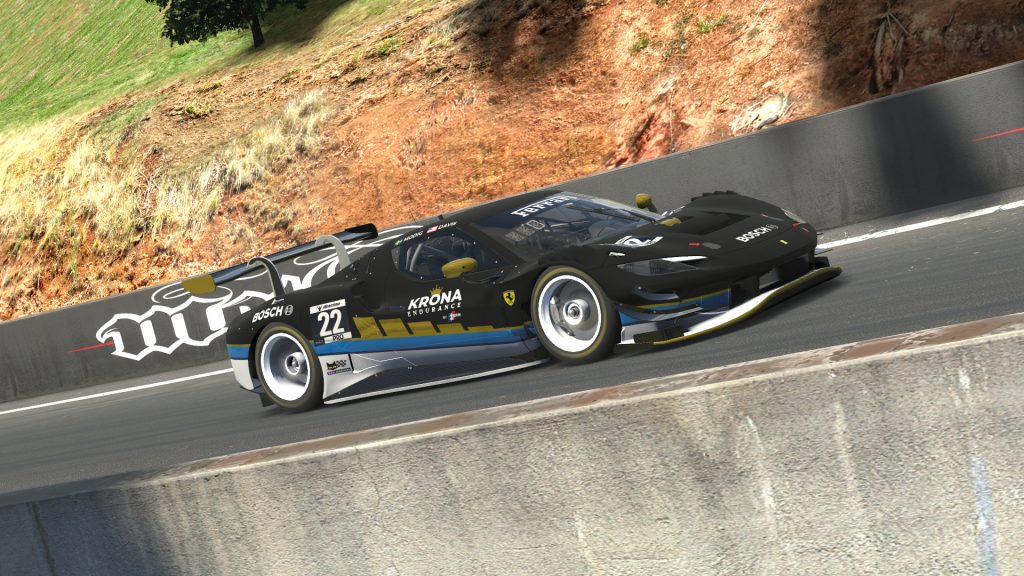
A Rocky Start
When race day arrived on Saturday, we were better prepared than ever before, and armed with a plan to reverse our early-race misfortunes. This time, Karl would qualify the car, with hopes of giving us a better starting position than I had previously earned.
That part worked – he lined up 26th on the grid, compared to my starts of 34th and 35th in the previous two years – but accidents in front of us dropped us back to that familiar position, and just ten laps into the race, contact while racing side-by-side with a BMW sent our car into the wall and out of the race.
We both remembered the helpless feeling after our early exit last year, knowing we’d have to wait a full year for a shot at redemption. But in this case, our next opportunity was only a few hours away, during the final timeslot of the day.
We took out one click of wing to help the power-starved Ferrari better keep up on the straightaways, and just hoped to survive any chaos at the start and wait for the hotter weather that we expected would favor our car, our setup, and our preparations.
But when the registration for this less-popular timeslot ended, we realized that we might be in for more than we bargained for. We had barely made it into the top split with the fastest teams, among which the racing is often ruthless in a full field of closely matched GT3 cars.
In this situation, all of our past concerns – poor qualifying results, first-hour incidents, and moving up through the field – would be magnified. Frankly, I couldn’t help but feel like another early exit was in the cards, as we would face a literal uphill battle on the mountain.
His confidence shaken by the previous race, Karl nominated me to qualify and start again. This time, our starting position wasn’t much better than I was used to – 33rd – so I hoped for mere survival in my opening stint.
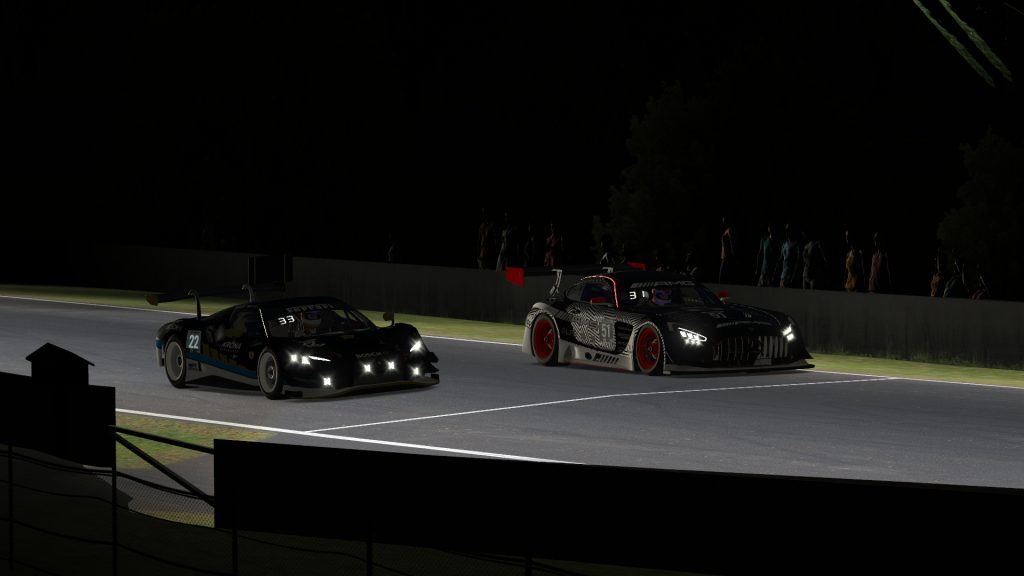
Moving On Up
The start was clean, but almost frustratingly so, with little attrition in the first hour and only three positions gained by the time I made our first pit stop.
As Karl settled into a double stint, he was met by unflinching lapped traffic ahead that cost us almost ten seconds to the next pack of competitors farther up the road.
He eventually found clearer track and better pace, moving up to the 24th position, but by then almost a full lap down to the race leaders. While we had no sights on winning this race, the big gaps ahead of us just three hours in were already daunting, and the track had been slow to warm up until that point.
That all changed during my double stint that followed, which was both one of the most surreal and the most fun I’ve ever driven. By myself on track and able to log laps with metronomic consistency, I listened to Karl’s commentary over our team radio as if it was a battlefield news report.
Oh my, the number 21 car has major damage and they’re in for repairs.
The team in ninth place has crashed now and they’ve fallen out of the race.
Watch out for this Ferrari going slowly; he’s been in the wall and is limping back to the pits.
Over that two hours of driving, we climbed up to 12th place, benefitting from the crashes around us and also gaining ground on other teams as they cycled slower drivers into their cars.
Not quite at the halfway point, and the hottest part of the day, it seemed like a top ten finish was not only possible, but probable if we could keep our car on track as other teams continued to run into trouble.
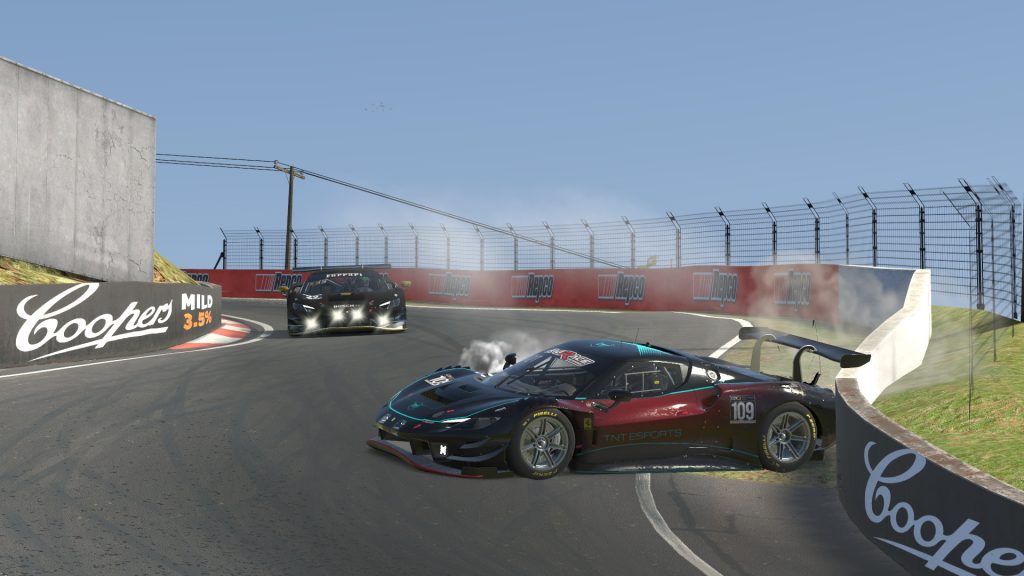
The Battle Begins
By lap 163 – just past the 1000-kilometer mark over which we’d previously found success in the V8 Supercars – Karl put us into the top ten for the first time with an on-track pass of the #11 SimVision Ferrari.
I took over the car in the same position, and with that same team breathing down my neck with a new and faster driver in their car. While he eventually got past me, we picked up a position over a slower Ferrari during that stint, which was one of the best I’ve ever driven in an endurance race.
With track temperatures at their warmest, I was running laps in the 2:05s – times I’d struggled to hit in testing on worn tires – and never put a wheel wrong on a slick track, all while facing pressure from a faster car around us.
Everything I’d practiced, studied, and refined in recent weeks – braking points, speed optimization in the downhill slalom through Skyline, tire management – was being tested, and it felt like I was passing that test, even if I wasn’t the best in the class.
As Karl and I continued alternating single stints, we traded positions with the #11 car and kept tabs on the even faster #211 Ferrari, which started 14th and had been steadily closing in from behind while recovering from a second-hour collision.
When I got back in the car for a race-ending double stint, I was 12 seconds behind the #11 and 12 seconds ahead of the #211. Catching one, or holding off the other, would be a huge challenge, but I couldn’t help but try.
Pushing as hard as I ever have in this race or on this track, I again managed remarkably consistent lap times, and even cut into the gap ahead. The only blemish was a scrape of the wall at Forrest’s Elbow that caused minor left-side damage but didn’t seem to hurt our car’s performance.
Unfortunately, the pace of the car behind was just too much, and by the end of the stint, they were only 2 seconds back.
Despite physical and mental fatigue more than 16 hours after our first race effort began that morning, I prepared myself to dig in and defend our tenth-place position over the final hour.
But that battle was never to be.
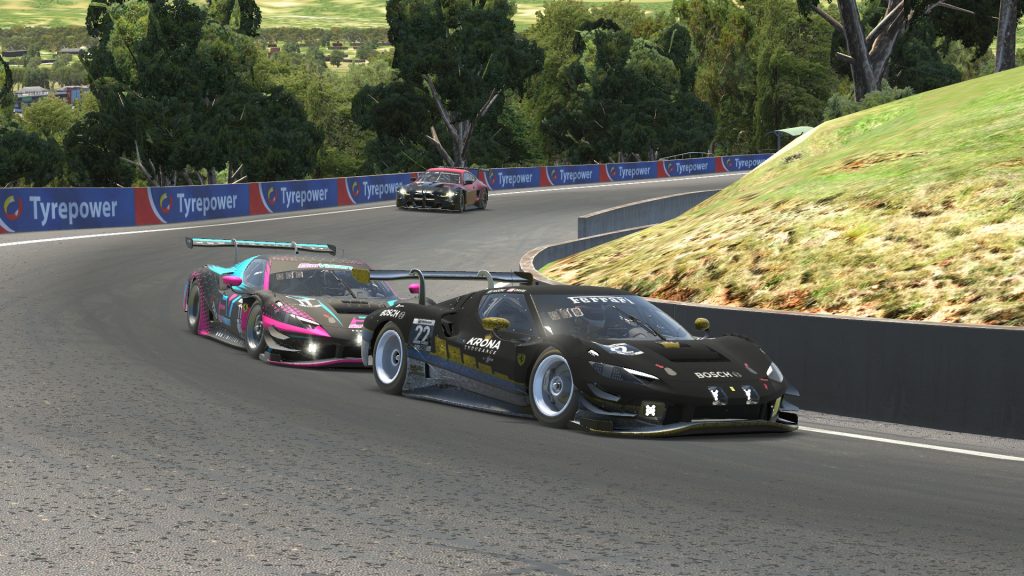
A Dark Cloud, and Silver Linings
After making our final pit stop with what we thought would be a shorter fuel fill than our opponents, they cycled out 3 seconds ahead of us – a five-second swing that we could only assume was from a combination of fuel saving in their previous stint, a faster in lap while I struggled to get my tires up to temperature on my own out lap, and their overall speed advantage.
Back to eleventh place, our only hope was for one car ahead to have an issue in the final hour.
“I hate to wish bad luck on anyone this far into the race,” I told Karl, “but I’m wishing for it.”
Despite all the attrition earlier in the race, the top teams were too fast and too resilient, and none dropped out over the final five hours. As our closest competitors pulled away in front of us, I held together my fractured focus and aching fingers to bring our car across the finish line in eleventh.
For Karl and I, it was a bittersweet result. In a perhaps undeserved second chance at this year’s race, we had finally reached the finish with no crashes and no unscheduled pit service or repairs, but came up one spot shy of our goal.
Each driving to our limits, we had a solid pace – and, as one of our opponents reminded us about after the race, an impressive 22 positions gained – but couldn’t quite match the fastest top-split talent.
Our all-time mark at the Bathurst 12 Hours now pushes to 0-for-5 without a top ten finish, and this year’s races are a microcosm of our history in the event: one with an early crash, and another with a nice improvement from a deep starting position that came up just short.
We can take some solace from this race, of course.
We finished just one lap down to the winners, who were driving the BMW that got the better of the pre-race Balance of Performance adjustments.
We both reminded ourselves that survival, especially early on, is possible, and often the only option when mired in the midfield.
And as teams dropped out all around us while we kept motoring on, we saw that good things come to those who wait.
We can only hope the same is true as our wait for success in Bathurst’s longest race stretches on another year.